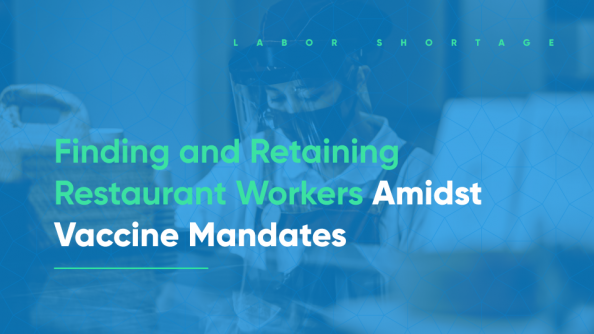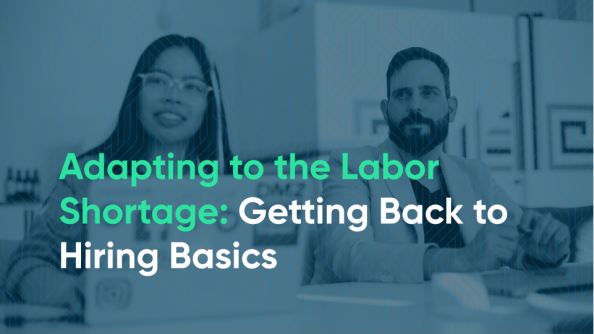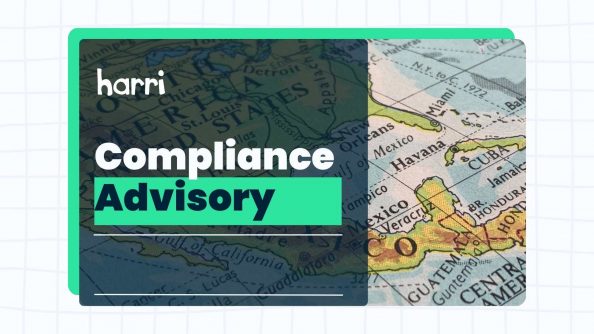10 Steps to Humanize the Candidate Journey

- By Harri Insider Team | December 30, 2019
According to LinkedIn, the candidates’ primary challenge in job hunting is not knowing what working at your company is really like. That is easily solved by humanizing the candidate journey.
Technology-based job hunting makes finding a job, training, and communication simpler than ever. But if you’re not careful, it can also dehumanize and depersonalize the talent search experience — which is the most critical aspect of the hospitality business.
Employer branding is a key component of making your restaurant or hotel come alive for job seekers, making sure that what you have to offer employees is clearly conveyed at every step of the journey. But then, you must take it down to an individual level — when Max or Melissa is job hunting, do they feel like they are being welcomed, valued, and engaged by your organization.
What do employees see when they spot your online job ad? Your language should be warm and inviting and inclusive. These tips can be helpful in crafting your ads. Most prospective employees trust the opinions of current employees more than corporate messaging, so be sure that your reviews, website, and other communications include real opinions from people who have worked with you. If you have “dark spots” on your reputation as an employer, be honest during interviews about how you’re working to correct them.
Check (and humanize) your communication style. Writing a great job description can help you attract the right kind of talent. You have an opportunity to convey the personality of your work environment and not just job title and requirements. For example, this ad for a dishwasher is so appealing that a candidate will feel valued even before they hit the “Apply” button.
Be sure to thank every applicant, even those who may not be qualified. Every person is a prospective customer of your brand. Rudeness or ghosting will create a negative halo around your business. Treat people as you would want to be treated.
Be respectful of candidates’ schedules and time. Automated interview scheduling enables applicants to select times that are convenient for them and makes communicating with those applicants easy and personalized. Acknowledging that someone has a current job or other obligations that limit their interview time is a way to show a candidate that you can be flexible and understanding; a valuable part of humanizing the hiring experience.
Show “a day in the life.” Explaining a job and its duties will give an applicant some sense of your expectations and culture. But enabling top candidates to shadow current workers or speak to other employees adds a layer of transparency. If a candidate brings up a concern based on peer feedback or an online review, address it directly and let them know what you’re doing to solve the issue.
Honesty builds trust. That applies to the entire candidate journey, beyond the application and interview. “Show the real you” advises this human resources website. Storytelling engages employees. When you talk about why you work for your brand or detail your own career path, you form a bond with candidates and employees. Avoid TMI and personal topics that might make candidates uncomfortable. Video interviewing can be a great way to connect with an applicant face-to-face while saving travel time and expense.
Onboarding and training. Once you’ve found your ideal candidates, manage expectations for onboarding and training and work to make your programs fun, convenient, and interactive. Assign mentors and make sure you’re thoroughly prepared to welcome and engage every new hire — from the second they walk through your doors. Online training is a great way to supplement your in-person experiences, but again, see #2. Keeping language clear and conversational can make even the most tedious compliance training more entertaining.
Create schedules that work. Employees’ lives are more complicated than ever before. Acknowledging that they have lives, commitments, family, and passions outside of the workplace establishes you as an employer who cares. Use a flexible scheduling system that enables people to easily plan and swap shifts. Involving employees in solving scheduling issues builds trust and cooperation within your team.
Get to know (and appreciate) your team members. Just as diners or hotel guests are flattered and happy when a server remembers what type of martini or accommodations that person likes, your team members will appreciate your knowing something about them — whether that’s what time of day they prefer to work or what their long-term career goals are. Celebrate special occasions and business successes and engage your team in deciding how and when to do it. Mandatory celebrations at inconvenient times and places can suck the fun out of happy occasions. What REALLY matters to employees and helps them feel valued? Sometimes a simple thank you (especially in front of co-workers) can go a long way. Remember too that not all employees value the same things. Take time for one-on-one meetings with every employee and take “pulse checks” using technology.
These are some of the qualities of successful organizations that are committed to employee satisfaction and retention.
Effective onboarding
Inclusion: feeling like part of a team; not singled-out because of specific traits or work style
Opportunities for career development and upskilling to learn new and valuable things (based on employee interest)
Succession planning. Someone will not enjoy a promotion for long if they are expected to still perform their old duties. If someone is moving to a new role, make sure you’ve planned in advance how their responsibilities will be covered.
Of course, timely and fair wages are the basics for any employer these days. Here again, technology can help. The right operating system can streamline payroll.
Be sensitive about rejection and separation. Breaking up is hard to do. When the best employees move on, resist the urge to be bitter. Never limit the growth of your key employees. If you need to terminate an employee, be honest with your remaining team about why you had to make a difficult decision. Every business has economic downturns and sometimes you may need to let people go to improve cash flow. Make sure you communicate in a way that doesn’t evoke panic. If you create the right team environment and build loyalty, your employees will add creative growth ideas and will want to be part of the group that leads the business through tough times. When employees leave, make sure they leave with their dignity intact. Negative experiences quickly find their way to social media and other forms of negativity and gossip.
Measure and monitor your humanity. Use the data you get from employee surveys, exit interviews, and online reviews to spot problem areas and then create action plans. Make sure your senior managers value the employee experience too and as you hire leaders, ensure their values are consistent with your brand’s.
The Harvard Business Review advises:
“Design your employee experience as thoughtfully as you design your customer experience.”
Technology will never replace a smile or a handshake, but it can streamline all aspects of the hiring, onboarding, training, and feedback process — giving you the insights you need to create a better experience.



















